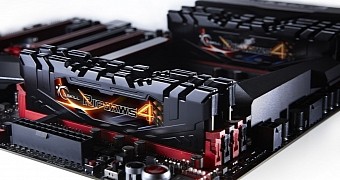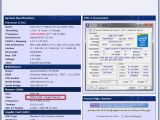If there ever was any evidence that the DDR4 memory technology standard was still getting its feet under it, the constant record setting and record breaking in terms of performance is it.
Less than a week ago, Kingston managed to set the latest record by the expedient of its HyperX line achieving 4,351 MHz.
This was after various other makers of RAM or motherboards, or partnerships between them, did the same thing over and over.
Now, G.Skill is once again getting center stage, having managed to drive its Ripjaws 4 RAM all the way up to 4,355 MHz.
The composition of the test bench
DDR4 is all well and good, but without a tough enough motherboard to weather the storm, it would be impossible to tweak the clocks to any relevant extent.
Same for the central processing unit, though less care was needed here. With only Intel Haswell-E top-end CPUs supporting DDR4 to begin with, there really wasn't much choice besides the Core i7-5960X.
Needless to say, much liquid nitrogen was involved in the OC run, as air cooling and even conventional liquid cooling would have been insufficient.
We can only wonder what the visibility was like during the test, given all the vapors that inevitably gather with every cup of LN2 poured in the makeshift reservoirs above the CPU socket.
The benefits of DDR4 memory
DDR4 has both higher module density and lower voltage requirements compared to DDR3, as well as higher data rate transfer speeds.
DDR3 works standard at 800 to 2400 MHz, not counting factory overclock of course. DDR4 has a basic performance of 1600 to 3,200 MHz, while working at 1.2V instead of 1.5V or 1.65V like DDR3. Indeed, even low-power DDR3, with 1.35V, needs more energy.
Low-voltage DDR4 will run at a voltage of 1.05 V, but no such memory has been released yet, and it will probably be 2016 or 2017 when this finally changes.
This is because even standard DDR4 is not expected to truly become a normal sight on the market before 2017, or 2016 at the earliest.
In the meantime, the technology can keep stretching its legs and setting new OC records, providing product makers with better factory OC guidelines.

 14 DAY TRIAL //
14 DAY TRIAL // 

